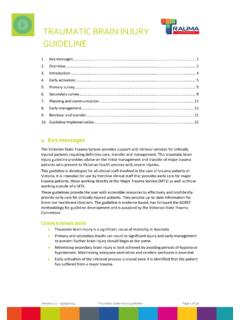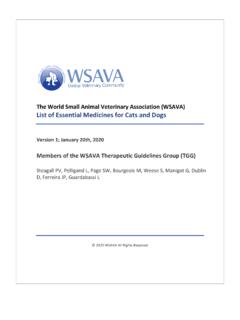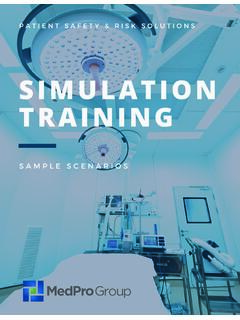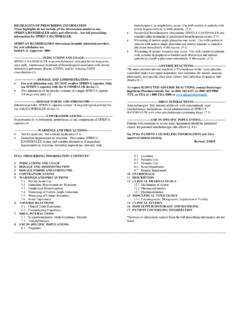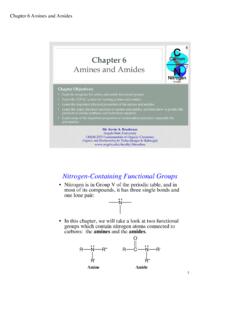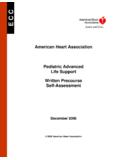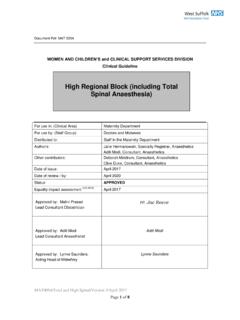Transcription of SPINAL TRAUMA GUIDELINE
1 SPINAL TRAUMA GUIDELINE Version - 25/09/2014 SPINAL TRAUMA GUIDELINE Page 1 of 27 1. Key messages .. 1 2. Rapid Reference GUIDELINE .. 3 3. Introduction .. 4 4. Early activation .. 5 5. Primary survey .. 6 6. Secondary survey .. 8 7. Planning and communication .. 12 8. Early management .. 13 9. Retrieval and transfer .. 16 10. GUIDELINE Implementation .. 16 1. Key messages The Victorian State TRAUMA System provides support and retrieval services for critically injured patients requiring definitive care, transfer and management. This SPINAL TRAUMA GUIDELINE provides evidence-- based advice on the initial management and transfer of major TRAUMA patients who present to Victorian health services with SPINAL injuries. This GUIDELINE is developed for all clinical staff involved in the care of TRAUMA patients in Victoria. It is intended for use by frontline clinical staff that provide early care for major TRAUMA patients; those working directly at the Major TRAUMA Service (MTS) as well as those working outside of a MTS.
2 These SPINAL management guidelines provide up-to-date information for frontline healthcare clinicians. These guidelines provide the user with accessible resources to effectively and confidently provide early care for critically injured SPINAL patients. The GUIDELINE has been assessed utilising the AGREE methodology for GUIDELINE development and is auspiced by the Victoria State TRAUMA Committee. Clinical emphasis points The early management of TRAUMA patients should emphasise the possibility of a SPINAL injury with a focus on clinical protective mechanisms. Protective handling is essential to minimise secondary SPINAL cord injury in the early management of SPINAL TRAUMA . Regular neurological assessment should be undertaken to monitor for progressive deterioration in function. Deteriorating respiratory function in a SPINAL TRAUMA patient may indicate the need for intubation. This requires specific planning and intervention. Once the patient is identified as suffering from a SPINAL injury, early activation of the retrieval process is crucial.
3 All polytrauma patients are ideally managed at an MTS. Adult TRAUMA patients with an isolated SPINAL injury should be transferred to the Victorian SPINAL Cord Service (VSCS), Austin Health. ARV is the first point of call to initiate retrieval and transfer in the adult patient. SPINAL TRAUMA GUIDELINE Version - 25/09/2014 SPINAL TRAUMA GUIDELINE Page 2 of 27 The main goal of early care is to ensure optimum resuscitation in the emergency setting as well as activation of the retrieval network, with timely transfer to an appropriate facility. SPINAL TRAUMA GUIDELINE Version - 25/09/2014 SPINAL TRAUMA GUIDELINE Page 3 of 27 2. Overview SPINAL TRAUMA GUIDELINE Version - 25/09/2014 SPINAL TRAUMA GUIDELINE Page 4 of 27 3. Introduction In Victoria, most SPINAL cord injuries ( S C I ) result in permanent neurological disability for patientsi. Australian data collected from 2006 07 indicated that 52% per cent of injuries were related to transport accidents and 29% were as a result of falls.
4 These two mechanisms alone accounted for more than three-- quarters of all traumatic SCIi . Presentations of SCI have a bimodal distribution. Cases related to TRAUMA in younger adults often involve higher velocity injury in a healthy spine. Injuries to the older adult often appear in later life with other causes, which may be associated with a lower velocity injury in a vulnerable spine. These may be a result of a pathological vertebral fracture, a first sign of malignancy and/or result from seemingly insignificant injury presentationii. Damage to the SPINAL cord may cause irreversible injury with the outcome of either temporary or permanent neurological natural progression of SCI, in particular rising SPINAL cord oedema, may lead to an exacerbation of symptoms in the hours following an accident. Early care of SCI can have a significant effect on the long-term outcomes for these patients, with safe and appropriate transport to definitive care facilities a vital processiii,iv, v. Emergent surgical fixation, where indicated, and stabilisation of the SPINAL injury may provide the best outcome for patients and is the first stage of recovery.
5 Injuries to the SPINAL cord may be classified as: complete (with no neurological connection between the cortex of the brain and the lowest sacral SPINAL cord segment) and incomplete injury (with some connection maintained). The American SPINAL Injury Association (ASIA) Standards for Classification of Neurological Injury include documentation of incomplete a n d / o r motor preservation and identification of unilateral deficitsvi. (Refer to Appendix 1) Following a traumatic injury, the SPINAL cord becomes oedematous and, with limited capacity for swelling inside the vertebral column, normal neurological function rapidly becomes compromised. This may affect about two nerve exit levels of the SPINAL cord above the level of initial injury. As resolution of swelling occurs over time, there may be recovery at the level of SCI but not always recovery in the long tracts below. Importantly, SCI TRAUMA patients may present with an amalgamation of motor and sensory neurological deficits, which may be unilateral or bilateral, affecting upper and/or lower body regions.
6 Conscious patients may describe various perceptions such as numbness, burning pain or absence of feeling or movement. The emerging and frequently ascending nature of SPINAL injury signs and symptoms indicate a need for exacting and ongoing assessment, as well as monitoring and management of the SCI TRAUMA patient. Two important outcomes of a SCI are neurogenic shock and SPINAL shock. Neurogenic shock is seen in SCI affecting the sixth thoracic vertebrae or above, typically occurring within 30 minutes of cord damage and lasting six to eight weeks following injury. It is a result of the loss of vasomotor and sympathetic nervous system tone or function. Its critical features are hypotension, bradycardia and poikilothermia. SPINAL shock is a combination of loss of and decreased reflexes and autonomic dysfunction that accompanies SCI. Skeletal and smooth muscles are therefore flaccid from hours to weeksvii. All patients with SPINAL TRAUMA must receive a rapid and systematic primary and secondary survey.
7 The main goals are to ensure understanding of injury mechanisms and pattern optimum management in the emergency setting, including prevention of secondary insults, SPINAL TRAUMA GUIDELINE Version - 25/09/2014 SPINAL TRAUMA GUIDELINE Page 5 of 27 and activation of the retrieval network, with timely transfer to an appropriate TRAUMA facility. 4. Early activation Emergency medical services should notify the receiving hospital that a TRAUMA patient with suspected SCI is on the way. This information may be crucial to how a severely injured patient is managed and can allow for communication to vital members of the response team as well as time to prepare the department for the patient s arrival. The presence of acute SCI needs to be assumed in a multi- TRAUMA patient, particularly with altered conscious state, until it can be dismissed by appropriate clinical and radiological examination. The following sequence of actions should take place upon initial notification: 1. Gather vital information from the notifier using the MIST mnemonic:viii M Mechanism of injury I Injuries found or suspected S Signs: respiratory rate, pulse, blood pressure, SpO2, GCS or AVPU T treatment given 2.
8 Personal protective equipment is vital in the care of TRAUMA patients. Ensure all staff involved in patient care are wearing gloves, aprons and eye protection. 3. Activate the TRAUMA team and available support departments (medical imaging, pathology). In small health service settings this may only consist of a clinician and a nurse. Additional staff may be gathered from wards or on call. It may be necessary to utilise the skills of all available resources including emergency response personnel in the initial TRAUMA management. 4. Set up the TRAUMA bay to receive the patient, including equipment checks, documentation, medications and resuscitation equipment. 5. Designate roles and specific tasks to staff and maintain an approach based on teamwork. Ensure good communication between all parties involved in managing the TRAUMA . Use closed-loop communication, which ensures accuracy in information shared between response staff. Repeat instructions, make eye contact and provide feedback. Misinterpreted information may lead to adverse events.
9 If there is no prior notification of the patient, then rapid activation of the TRAUMA team request must take place and any additional resources notified. If it is anticipated that transfer to an MTS will be required, early retrieval activation is essential (phone ARV on 1300 368 661). Early retrieval activation ensures access to critical care advice and a more effective retrieval response. Early activation and timely critical care transfer improves clinical outcomes for the patient. Even if you are unsure, call the ARV coordinator, who can provide expert guidance and advice over the phone or via tele- or videoconference, and link to an MTS as required. SPINAL TRAUMA GUIDELINE Version - 25/09/2014 SPINAL TRAUMA GUIDELINE Page 6 of 27 5. Primary survey Use a systematic approach based on the ABCDE survey to assess and treat acutely ill patients. The goal is to manage any life-threatening conditions and identify any emergent concerns, especially in an SCI patient who may present with other complications of TRAUMA .
10 All patients with a mechanism of injury likely to have induced SCI must have an appropriately fitted and sized collar placed and inline immobilisation implemented. Regular assessment is crucial in SCI TRAUMA patients as developing cord oedema may cause significant changes in neurological function. Airway with cervical spine protection Early and safe airway management in the SCI patient can make a crucial impact to long-- term patient outcomes and functional deficits. Assess for airway stability Attempt to gather a response from the patient. Look for signs of airway obstruction (use of accessory muscles, paradoxical chest movements and see-saw respirations). Listen for any upper-airway noises and breath sounds. Are they absent, diminished or noisy? SPINAL patients are at particular risk of passive regurgitation and subsequent aspiration. High cervical injuries potentiate loss or compromise of both gag and cough responses. (Nasogastric tube insertion is highly recommended although consideration of intubation and inherent airway protection should be considered prior to insertion.)
